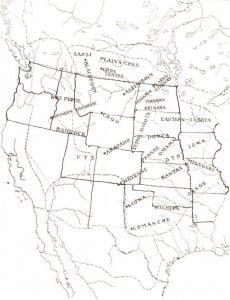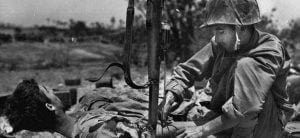Indian Linguistic Families of Kansas
The Indian Linguistic families represented in Kansas may be separated into two principal divisions or heads: Native Linguistic Families Emigrant Linguistic Families The Native Linguistic Families were: Algonquian Caddoan Kiowan Shoshonean Siouan The Emigrant Linguistic Families were: Algonquian Iroquoian Siouan Tanoan The tribes native to Kansas were enumerated as follows: Arapahoe Cheyenne Of the Caddoan Linguistic Family: 1. Pawnee Grand Pawnee Republican Pawnee Tapage Pawnee Loup Pawnee 2. Wichita Of the Kiowan Linguistic Family: 1. Kiowa Of the Shoshonean Linguistic Family: Comanche Of the Siouan Linguistic Family Kansa Osage The Emigrant tribes of Kansas are enumerated as follows: Chippewa Delaware … Read more






